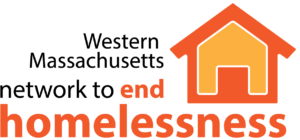HUD is providing a weekly series of messages in advance of the CoC Program funding competition. The messages highlight best practices and identify federal funding priorities. The first of these messages, below, focuses on Housing First:
The Housing First model is not a new approach; however, it has only been since the adoption and implementation of Opening Doors that HUD and our Federal partners have really begun to emphasize the use of this approach. We have seen the impact of using Housing First principles and consider it to be a best practice when used in permanent supportive housing to serve people experiencing chronic homelessness. HUD has posted a brief called Housing First in Permanent Supportive Housing that discusses the core principles of a Housing First model to help inform implementation of this model at the local level.
As I stated in a Weekly Focus message last year, Housing First is a paradigm shift from the traditional housing ready approach. It follows a basic principle—that everyone is ready for housing, regardless of the complexity or severity of their needs. My colleague Richard Cho, Senior Policy Director at the US Interagency Council on Homelessness, recently posted a blog that aimed to de-bunk certain myths about Housing First. I encourage you to read it but I want to highlight one of his key points: Housing First is not a ‘program’, it is a system-wide orientation and response. For this very reason, HUD added a new scoring element in the FY 2013-FY 2014 CoC Program Competition that scored CoCs on the extent to which they had adopted a Housing First approach throughout all of their Permanent Supportive Housing (PSH). Recipients of grants that indicated that they followed a Housing First approach in their FY 2013 project application will therefore be expected to do so for at least the FY 2013 and FY 2014 operating years since this information contributed to the CoC’s overall score for the joint competition.
Adopting Housing First has to go beyond this project-by-project implementation. What we—HUD, USICH, VA and our other Federal partners—are talking about here is systems change. Quoting Richard Cho, “Housing First is a whole-system orientation, and in some cases, a whole-system re-orientation. To borrow a phrase, it is about ‘changing the DNA’ of how a community responds to homelessness.” Evidence has shown that people with long histories of homelessness and chronic disabilities who were served in PSH using a Housing First approach had a number of positive outcomes. Homelessness, arrests, hospitalization, and emergency room visits all declined significantly. Furthermore, the public costs of shelter, corrections, and health care declined significantly, making the net public cost of serving a person with PSH about the same as or less than the cost of allowing them to remain homeless.
The Housing First approach has several key features: few programmatic prerequisites, low barrier admission policies, rapid and streamlined entry into permanent housing, voluntary and engaging supportive services, and a focus on housing stability. In combination, these elements successfully house even people with long criminal histories and the most severe medical and behavioral health problems. HUD recognizes that this approach may not be applicable to all program designs, particularly for those projects formerly awarded under the Supportive Housing Program (SHP) or Shelter Plus Care (SPC) Program which were permitted to target persons with specific disabilities or projects that have more restrictive program models (e.g., “sober housing”). But it is imperative that CoCs look closely at all of its permanent supportive housing to make sure that this model is being implemented to the maximum extent possible.
A good first step is to assess tenant selection and admission policies to ensure they are as simple and streamlined as possible and that people who most need assistance are not screened out. Providers can also review termination policies to ensure that they are consistent with Housing First practices and that every effort is made to prevent lease violations and troubleshoot barriers to housing stability before resorting to evictions. The Housing First orientation is very different than the way many projects have been operating, and staff may need specialized training in practices such as motivational interviewing and harm reduction to successfully manage PSH with a Housing First approach.
In the coming months and years, HUD’s emphasis on a Housing First approach in permanent supportive housing will likely grow, as will the need to prioritize people with the longest histories of homelessness and the highest service needs for PSH. This requires a new way of thinking that we recognize will not be easy and will not happen overnight. We continue to provide guidance and resources on this topic and in the meantime, would encourage you to use the USICH Housing First Checklist: A Practical Tool for Assessing Housing First in Practice. This tool is “intended for use by policymakers, government officials, and practitioners alike to help make a basic assessment of whether and to what degree a particular housing program is employing a Housing First approach.
The U.S. Interagency Council on Homelessness (USICH) and the U.S. Department of Housing and Urban Development (HUD) recently hosted “Core Principles of Housing First and Rapid Re-Housing,” a webinar designed for homelessness service providers, communities, and policymakers to understand the core components of the Housing First approach and the Rapid Re-Housing model and how both work together to help end homelessness. If you were not able to participate in the live webinar, you are encouraged to view the webinar materials.
As always, thank you for your tireless work to help end homelessness.
Ann Marie Oliva Director, Office of Special Needs Assistance Programs

